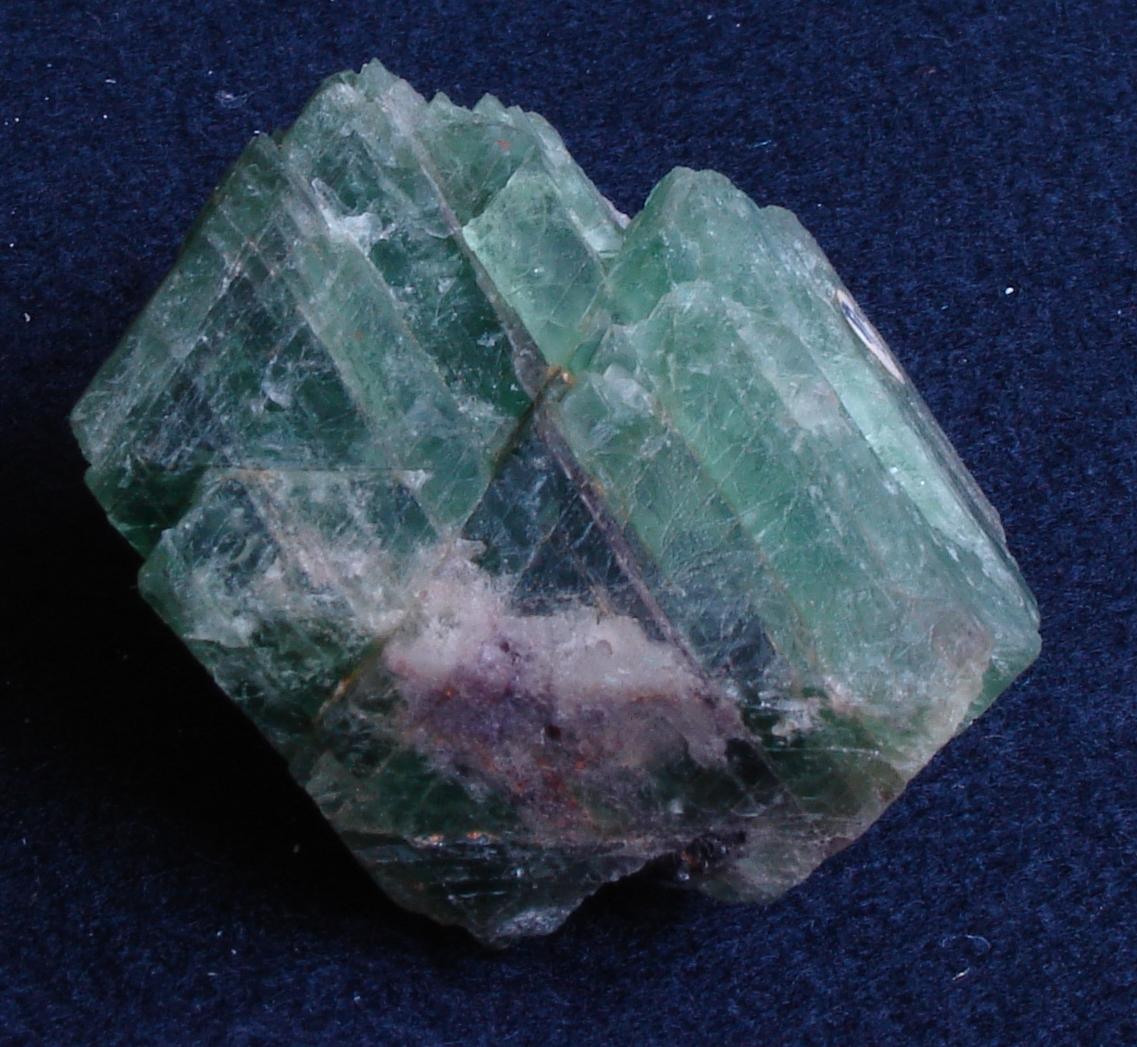What is Gemstone Cleavage?
Gemstone cleavage is a break in a crystal along internal planes. Learn the science behind this and the difference between cleavage, fracture, and parting.
2 Minute Read
Under ideal circumstances, a cleavage plane might be virtually smooth and flat on an atomic scale. A break in a gemstone that doesn't occur along cleavage planes is either a fracture or a parting.
Gemstone Cleavage
Since the atomic arrangement within a crystal is symmetrical, the planes of specific bonds are symmetrically disposed within the crystal. Internal cleavage planes are, therefore, as symmetrical as external crystal faces.
The term cleavage in gemology only applies to crystalline materials. For example, since glass is a super-cooled liquid in which the atoms are not arranged in a long-range periodic array, it can have no cleavage because there are no uniform bond layers.
Cleavage Grades
Gemstone cleavage is usually described with reference to crystallographic axes and directions and is also graded according to its "perfection," or ease with which the gem can be spilt along the cleavage.
The five grades or degrees are:
- None
- Poor (or weak)
- Fair (or moderate)
- Good (or imperfect)
- Perfect
Gems with perfect cleavage are easiest to split, while those with no cleavage are hardest to split.
Variable Cleavage Within a Single Crystal
Sometimes, there are different degrees of cleavage perfection in different directions within the same crystal.
Can Gemstone Cleavage Affect Faceting and Jewelry Setting?
Gems with perfect cleavage must be set and worn carefully, since a sharp blow to the stone along a cleavage direction may easily split the gem.
Spodumene is well-known for being difficult to cut. Even topaz offers occasional problems to the cutter who isn't aware of its cleavage direction, because it's virtually impossible to polish a gemstone surface that is parallel to a cleavage plane.
Gemstone Fracture
Fracture is the way a mineral breaks other than along cleavage directions.
The descriptive terms for this property are: conchoidal, fibrous or splintery, hackly, and uneven.
Conchoidal Fracture
A conchoidal fracture is shell-like and is distinguished by concentric curved lines. This is the way glass breaks.
Fibrous/Splintery Fracture
The terms fibrous and splintery are often used interchangeably to denote a fracture that creates sharp, elongated points in a mineral.
Hackly Fracture
A hackly fracture produces sharp, jagged points.
Uneven Fracture
An uneven fracture produces a rough, uneven surface. Uneven fractures don't have sharp points like splintery and hackly fractures.
Gemstone Parting
The term parting refers to breakage of minerals along directions of structural weakness, such as twinning.
However, unlike cleavage, parting isn't present in all specimens of a given species. Parting is a result of the individual growth of a particular gemstone and not the atomic or crystal structure of a gem species.
Joel E. Arem, Ph.D., FGA
Dr. Joel E. Arem has more than 60 years of experience in the world of gems and minerals. After obtaining his Ph.D. in Mineralogy from Harvard University, he has published numerous books that are still among the most widely used references and guidebooks on crystals, gems and minerals in the world.
Co-founder and President of numerous organizations, Dr. Arem has enjoyed a lifelong career in mineralogy and gemology. He has been a Smithsonian scientist and Curator, a consultant to many well-known companies and institutions, and a prolific author and speaker. Although his main activities have been as a gem cutter and dealer, his focus has always been education. joelarem.com
Related Articles
Anhydrite (Angelite) Value, Price, and Jewelry Information
Fluorite Value, Price, and Jewelry Information
Glass Value, Price, and Jewelry Information
Spodumene Value, Price, and Jewelry Information
Latest Articles
Milarite Value, Price, and Jewelry Information
Appraising Pearls: How to Grade Pearls
Agate Buying Guide
Carving Techniques for Handling Inclusions in Transparent Gems
Never Stop Learning
When you join the IGS community, you get trusted diamond & gemstone information when you need it.
Get Gemology Insights
Get started with the International Gem Society’s free guide to gemstone identification. Join our weekly newsletter & get a free copy of the Gem ID Checklist!
